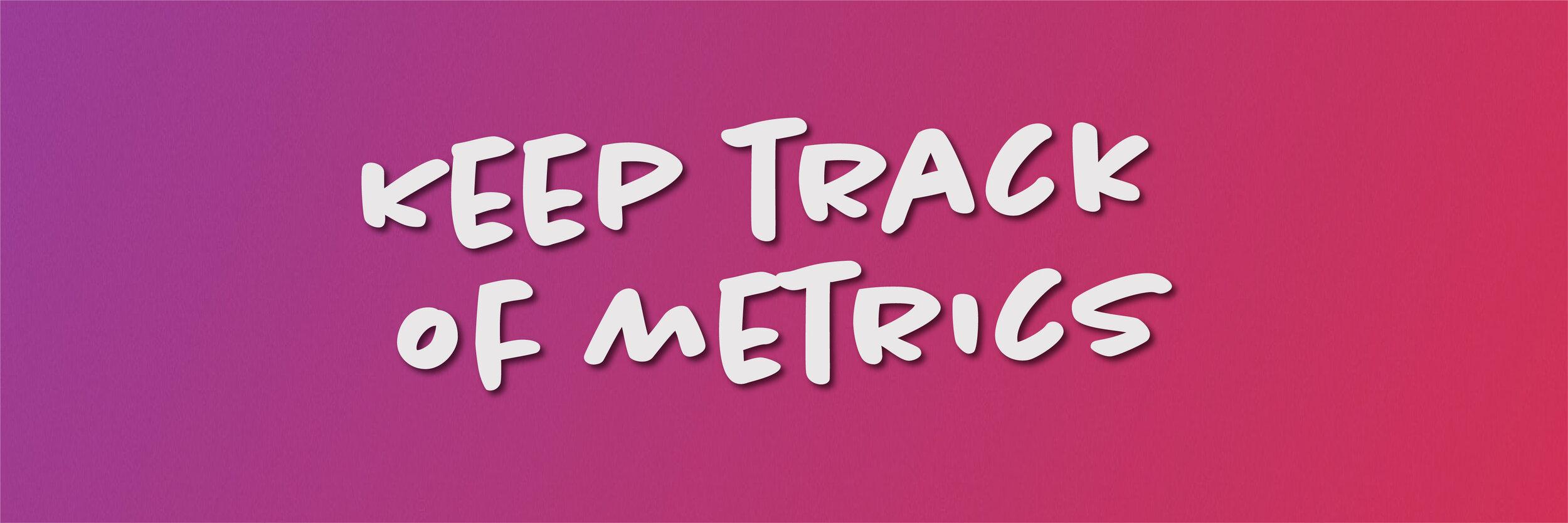18 Social Media Tips for Small Businesses
Image courtesy of @stereophototyp via Unsplash.
Reading time: 12 mins
It seems like the whole world is on some form of social media. There’s actually around 3 billion social media users, so it’s not quite the whole world, but it’s a bloody big chunk.
So your business needs to be on social media.
Social media is basically another communication tool, another way you can speak to your audience.
It’s a way of building your brand, nurturing your relationship with your audience, and now, even enables users to shop directly through the platform.
But it can be easy to let your social media business account fall to the wayside, or become too promotional.
Here are our top tips on how you can best navigate social media as a small business and encourage growth:
Image courtesy of @lukechesser via Unsplash.
1. Get set up properly
Where possible, it’s best to start off on the right foot.
The social media platform creators want you to achieve your goals on social media, and they know how you can do it best, and they can probably explain it easiest.
Watch their videos, read their guides and follow the steps for setting up your account:
Image courtesy of @lukechesser via Unsplash.
2. Respond to customers
You should always reply to messages, comments, reviews, tags, as much as you can.
It sounds like a daunting task, but when you’re first starting up, you’re not likely to get many - it sounds harsh, but it’s true.
As you grow, to save yourself time, on some social media platforms like Facebook, you can set up a automatic replies to answer the simpler questions.
Responding to customers makes them feel heard and valued by you and your brand. Which they should be - they’re your source of income!
Image courtesy of @lukechesser via Unsplash.
3. Don’t just promote yourself
Customers will get bored and lose faith in your brand if you’re constantly posting about how great you are, and how great your products are. It sounds fake.
Think about it - the brands you admire aren’t often tooting their own horn.
Sure, it’s great to post about your achievements, products or services once in a while, but make sure it’s interspersed with quality content.
Your customers need a reason to follow you on social media. It’s not just to hear you talking about yourself all the time. Would you keep a friend who just spoke about themselves?
It’s got to be a bit of give and take - they’re giving you money and their attention, so you give them your product/service and valuable content.
Use social media to promote your content - create things that your audience will want to see.
Here are some ideas for content that aren’t self-promotion:
User-generated content
Giveaways
Behind-the-scenes snapshots
National days - here’s a useful website to see lots of national days
How-to guides and tutorials
Blog posts
Polls
Quizzes
Games (you can embed these to some social media platforms)
Infographics
Interviews
Things that inspire you (books, films, art, music, other business owners)
Quotes
AMA sessions (ask me anything)
Partnerships
Responses to local or national events
Milestones (1000 followers? Share it!)
If in doubt, the general rule of thumb is 80:20. 80% content, 20% promotion.
Remember: content is king queen!
Image courtesy of @lukechesser via Unsplash.
4. Encourage engagement
You want your audience to talk back to you - for them to like, share, subscribe, follow, comment - everything!
Every engagement with you increases your range on social media. The more people interact with you, the more likely other people will find you.
Ask your audience questions, get them to tag their friends with funny or thought-provoking content. Give them a reason to.
Image courtesy of @lukechesser via Unsplash.
5. Keep track of metrics
Make sure you set yourself SMART (specific, measurable, achievable, relevant and time-based) goals, and record the metrics.
You won’t know what success on social media is until you set yourself goals… and achieve them.
Keep up-to-date with your goals and your metrics, so you can analyse what works for you, and what doesn’t, and use those metrics to test different types of content.
Image courtesy of @lukechesser via Unsplash.
6. Choose the right platforms
Since social media is such a vast universe, it’s best to start with one, then build up others when you’re more established and have found your voice.
Research where your audience are, and get on that platform first. Here’s some information on the type of audience on each platform, and what they’re best for :
Facebook: Users are typically 25 or older. Used to share content in a variety of forms, but beware - Facebook does all that it can to keep users on its site, so it’s best not to fight them for fear of losing your reach. Share videos, infographics, milestones, behind-the-scenes snippets and competitions, just try to keep your audience on Facebook.
Instagram: This is better for B2C businesses, especially ones that are more visually appealing. The ‘Instant’ side of Instagram is still present as well, with the addition of Stories.
Twitter: Best for sharing information and news, and for sharing links to your website. The Twittersphere is a varied bunch, from all ages and a lot of different interests.
LinkedIn: Great for B2B, specifically for professionals. This has a totally different feel than the other social media platforms - it’s more understated and formal.
Pinterest: Ideal for businesses with a mainly visual offering, like fashionistas, artists or make-up artists. Make sure your product images link back to your website for people to purchase.
Snapchat: Usually younger audiences, under the age of 24. Much more of an instant-reaction platform, ideal for quick-fire, video-based content.
Youtube: If you have, or are planning on having videos, get on Youtube. It’s great for brand awareness, but don’t expect many clicks to your website from Youtube.
While you should start off with one social media account, it’s worth signing up for the other ones that you intend to eventually use at the same time, in case the names get taken.
Image courtesy of @lukechesser via Unsplash.
7. Stay true to your brand
Don’t post something that jars with your brand.
Remember, when you’re posting on social media, you’re representing your brand, not yourself.
So don’t share those smutty memes if it doesn’t fit in with your brand.
This also goes for the visual brand of your business. Tools like Canva can be very useful to create content, but make sure that you stick to a set of brand guidelines so everything looks like it’s from the same company.
Image courtesy of @lukechesser via Unsplash.
8. Let’s get visual
Images are so important on social media, particularly with more visual platforms like Instagram and Pinterest.
Use images as much as you can. But make sure that they’re good. Try to avoid just overlaying images with fonts like Comic Sans. Just avoid Comic Sans.
As I’ve mentioned before, free tools like Canva are useful where you don’t have a designer (or aren’t one), and if you research designers, you can get a bit of an eye for what looks good.
Image courtesy of @lukechesser via Unsplash.
9. Show your human side
While you should stay true to your brand (as above), it’s important to show your human side.
People don’t like big corporations anymore, they want to see the people behind them, it gives them something else to relate to.
Plus, behind-the-scenes sneak peeks can be great as content - especially if you have an office pet!
Image courtesy of @lukechesser via Unsplash.
10. Perfect your timing
Find out when is best for you to post on the various platforms you’re on. You can do this based on research done by others, according to your industry, and with your own tests.
For those of you too busy to post to social media at different times during the day, use a scheduling tool. There are some great free and paid ones - we’ll do a guide about them soon to help you find the best one for you.
It’s also a good idea to set aside specific time for social media - once a day or once a week - because it’s so easy to get lost scrolling through Instagram and lose all the hours in the day.
Image courtesy of @lukechesser via Unsplash.
11. Keep CTAs clear
A call-to-action is essentially what you want the person reading your marketing message (be it a social media post, website page, email or advert) to do.
If you have a CTA (call-to-action) in your social media post or on your profile(s), keep it clear exactly what it is.
This goes for any CTA you have, in any marketing communications.
If you have more than one CTA, they simply won’t be as effective. Your customers will (even subconsciously) be confused as to what to do next.
And if they don’t know, they’ll just keep scrolling, and they’ll go elsewhere. Maybe even into the clutches of your competition...
Should they go to your website? View your video? Enter your competition? Buy your product? Make a decision, and stick to it.
Image courtesy of @lukechesser via Unsplash.
12. Invest in paid promotion
Paid promotion on social media can be a fantastic tool, but it can also be a waste of money.
You need to know what you want to achieve (your goal), be it more followers (brand awareness), more purchases (or conversions), customer feedback, survey responses… the list goes on.
Your goal should be SMART:
Specific - e.g. 500 new followers
Measurable - e.g. you can measure the amount of new followers
Achievable - e.g. 500 new followers from a post (or a campaign series of posts) must be achievable
Relevant - e.g. don’t just aim to get followers for the sake of it. There has to be a reason for you needing those 500 new followers. And those followers must be relevant to your brand in one way or another, otherwise they’re worthless.
Timely - e.g. 500 new followers in 7 days
You can also choose your audience on most forms of social media advertising. This ensures that every penny (or cent) you put into the ad campaign is well spent. Targeted advertising is incredibly useful.
Here are some types of advertising that you can consider:
Video - video content performs better than text or image content, in general. The only downside is the larger comparative cost, but it can be worth it.
Quizzes - quizzes can be great, as they get your audience engaged, and they can provide more data for you to use (responsibly, of course).
Stories - these are on platforms like Facebook and Instagram, and are quick-fire, condensed adverts. They’re great when you have a short, sharp message you want to get across.
Image carousels - a series of images that your audience scrolls through, particularly useful when showcasing a range of products, or a linear story.
Message/messenger ads - I personally don’t like these, even as a marketer, I find them a bit too invasive. But they can be useful in recapturing customers that have dropped off, or abandoned their cart. Definitely not recommended as a first interaction with the customer.
Testimonials - these are great in theory, but audiences are becoming more sceptical of this sort of advertising, due to the boom in influencers. Be genuine, and testimonials will work wonders.
Polls - people love to share their opinion, even on seemingly trivial topics. You can use them to your advantage and conduct some market research to see what your audience really thinks.
Lead capture form - ideal for products or services that have a longer-tail conversion - usually products that are worth more money. You just have to give them a good reason to give you their valuable details.
Image courtesy of @lukechesser via Unsplash.
13. Don’t buy your audience
If you’re going to spend money, do a decent paid promotion.
Don’t. Buy. Your. Audience.
You’ll end up with a mixture of fake accounts (bots) and real people who would never buy from your brand.
What’s the point in talking to them? Don’t waste your time trying to convert those that can’t be converted.
Plus, social media platforms are cracking down on bots all the time, so you don’t want to wake up one day to find that 50% of your followers have gone.
Say it with me: don’t buy your audience.
Image courtesy of @lukechesser via Unsplash.
14. Use competitions, discounts and giveaways
These are great lead generation strategies, but make sure that your giveaway is relevant, or have some qualifying criteria, so you can make sure that the leads you get are useful to your business.
They can also be useful at getting your existing social media audience to share more data on themselves so you can continue to market to them more effectively.
For example, a company that makes doughnuts could ask their audience what new flavours they would like to see, so they can expand their range with confidence that it’ll succeed, and those that share their thoughts could be in for a chance to win a box of the new flavour doughnuts.
Okay, now I just want some doughnuts.
Image courtesy of @lukechesser via Unsplash.
15. Use hashtags properly
Hashtags are fundamental to growth on most social media platforms, they’re essentially their own language!
Here are a few quick tips on how to use hashtags, taken from our Hashtags Cheatsheet:
#Dont #hashtag #every #bloody #word.
Don’t use generic hashtags like #love or #happy - they’re not really going to do anything for your brand except draw in bots.
Research popular hashtags in your industry.
Consider how your hashtags look when written (avoid #susanalbumparty)
Image courtesy of @lukechesser via Unsplash.
16. Harness the power of user-generated content
UGC (user-generated content) is absolutely fantastic. It makes your audience feel engaged and active, and it saves you from creating the content yourself!
User generated content is exactly what it sounds like - content that your users (or audience) creates themselves.
People trust user-generated content more than they trust marketing copy. They know what ‘standard’ marketing looks like, and it’s just not as effective as it was back in those days of Mad Men.
Here are some of the different ways you can get UGC for you to use on social media:
Contests - how about running a competition where people send in their video testimonials of your product, or photos of them using it? The content you’ll have amassed will likely be more valuable to you than whatever you choose as your prize.
Reviews - not just those that customers send you, but also those on third-party websites, like TrustPilot or TripAdvisor.
Case studies - usually for B2B or higher value services/products, these can take some work to put together, but they can be worth it, and a useful insight into how you work for your customer.
Q&A sessions - particularly useful when you offer a range of products with different solutions, like a skincare company. Use those insights to craft your campaigns and your products. And why not post about them - remember Lidl’s advert, when they invited someone who complained about their meat to the farm that they get their produce from?
Blog posts - collaborations with bloggers can be an effective marketing strategy, but make sure that you’re working with someone who has the same (or similar) brand values and audience as your brand.
So the next time someone tags your product in a positive Instagram post, why not add it to your feed, or your story?
Image courtesy of @lukechesser via Unsplash.
17. Keep an eye on the competition
Now for the sneaky part of social media - spying.
Check out what your competitors are doing, and how they’re conducting themselves on social media.
Make sure you’re setting yourself apart from the rest, and fill in the gaps that they’re leaving wide open whilst keeping true to your brand values.
Keeping track of competitors on social media can also be useful to set targets for yourselves as a company - see what sort of figures they’re getting. And then get more.
See what customers are saying about your competitors as well - you can spot unhappy customers and lure them over to you. Just make sure to do it softly, softly, and not heavy handed by straight-out attempting to poach them. Let them come to you.
Sometimes playful rivalry can be entertaining on social media, but tread carefully - you don’t want to be seen as spiteful, or jealous.
Image courtesy of @lukechesser via Unsplash.
18. Have fun!
There’s no denying that social media is a hefty beast, with more twists and turns than a twisty-turny thing, but ultimately, social media is fun! So enjoy it!
Those are our 18 top tips on social media for small businesses - I hope they prove useful for you, but if you have any questions or comments, feel free to pop them in the comments below.
Here are a few other useful blog posts for small business owners and entrepreneurs, check them out, put them into practice, and watch your business grow!


















































